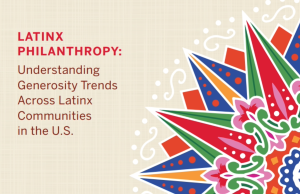* Editor’s Note: This column was written by Julia Campbell and drawn from a session at AFP ICON with co-presenter Josh Hirsch called: “The New Rules of Digital Fundraising: How to Convert (and Keep!) More Digital Donors.”
The digital landscape continues to transform the social good sector, with online giving growing year-over-year. The Blackbaud Institute reported that there has been a 42% increase in online giving during the past three years, with 12% of total fundraising coming from online sources. This is on par with consumer trends around e-commerce, which also surged during the COVID-19 pandemic.
Despite the rapid shift toward online and mobile giving, many nonprofits lag behind. To continue to grow your nonprofit’s fundraising program, your organization needs a strategy not just to acquire digital donors, but to also retain them long-term. Multiple recent donor studies have shown that the retention rate for new donors is as low as 20%.
Creating a framework to get and to keep more digital donors requires planning. To drive more first-time and repeat digital donations, there are three essential elements that make up a successful online fundraising campaign:
An urgent and relevant message
The main principles of fundraising still apply in the digital environment. There needs to be a compelling message that encourages people to give, and to give now. This message needs to establish urgency and relevancy. Why would I pay attention to this, and why right now? Why would I take the steps required to make a donation?
The message should:
- Demonstrate the impact or benefit (e.g. Your partnership brings children home to forever families.) As a donor, will I feel like I can make a meaningful difference, even with just a small donation? How will this make me feel to participate? Will I feel proud to be a part of this?
- Create a sense of urgency (e.g. Change everything for a child in poverty today.)
- Share a startling statistic (e.g. One in 10 people lack access to clean water. We’re on a mission to change that.)
- Make an appeal (e.g. Myanmar’s elephants need our help.)
- Give people a reason to donate. Unlike writing for brands, you’re not writing to address a customer pain point or challenge. Instead, you need to write stories that move people, evoke emotions and get them to believe in the cause.
- Communicate the benefit or impact the donation will have.
- Include impactful, relevant visuals, ideally photos of real people (or animals) who will benefit from the donation.
A clear and compelling call to donate
Don’t dance around the ask. Ask for the donation using powerful words such as Donate Now, Give, Help. Avoid more passive words like “Learn More” and “Visit our website.”
Offering an amount will help your donors make a decision. For example, the highly successful TeamTrees.org campaign clearly states “$1 = 1 tree” — helping donors understand exactly what happens when they give a certain amount.
Frictionless U (user experience)
Be sure that making a gift online is as frictionless as possible through mobile-optimized technology. Knock down all the obstacles that might come into play with a digital donor.
Millennials and Gen Z grew up alongside tech, with giving to a cause or nonprofit being an easy click or swipe away via platforms such as Venmo, GoFundMe or even directly on social media. Next Gen donors want to give when they want and where they already are (their phones and social media apps).
Best practices:
- Take out as many steps as possible in the donation process.
- Start A/B testing so that you can better understand what causes the drop off, and when.
- A multi-screen donation process with multiple clicks and redirects will definitely lower the chances of clicking that final donate button.
- Reduce distractions. Your online donation form should be just that – a donation form. Remove anything distracting leading away from the donate button before they submit.
- Be sure that your donation form clean and free of any external links so that users can make it through the process quickly without being sidetracked.
Optimize for conversions
The donation page and technology matter, but what happens before a donor gets to the donate page or form is just as important. Think of where your donors are coming from: They might have been targeted from digital ads or a post on social media. This means they were more likely than not on their phones, probably consuming another form of media, such as watching TV, playing a game, scrolling Facebook or Instagram.
When your website visitors don’t convert (when they arrive at the donation page but don’t complete the donation), it can be for several reasons:
- They are confused.
- They don’t see the value in solving the problem.
- They don’t understand the problem.
- The timing is wrong for them.
- The process is not easy, seamless, or frictionless.
Using digital channels for donor retention
It costs more to acquire a new donor than it does to keep one that you already have — so focus a lot of your time and effort on donor retention. Digital channels such as social media and email can be effectively used to build and deepen relationships with current donors, and even encourage them to make bigger gifts or become monthly sustainers.
Immediately after someone makes a donation online, they should be directed to a thank you page that tells them what to do next. You can also use this opportunity to encourage them to make their donation a monthly donation.
Social media is a perfect place to stay top of mind and remind your donors why they gave, and to make them feel like they are part of a bigger community and mission. Upload your digital donor list to any social media network where you have a presence and you can target ads towards that audience.
****
Julia Campbell, host of the Nonprofit Nation podcast, was selected as a top thought leader and one to follow by Forbes and BizTech Magazine. Her email is Management … A.J. Steinberg, CFRE









